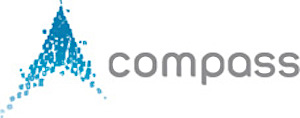Paired Comparisons
We can extend the method of looking for dominance to help focus conversations on situations where there are trade-offs that need to be considered. For example, let’s look now at Alternative 2 versus Alternative 3.

We’re using the same colour scheme as in the discussion of dominance, that is, where:
- Blue = a reference against which something an alternative will be compared
- Green = rows where an Alternative performs better than reference
- Orange = rows where an Alternative performs worse than reference
- White = rows where an Alternative performs the same as the reference
Here we can see from the colours Alternative 3 performs the same as Alternative 2 (the reference alternative) on 4 objectives (white). So let’s hide those.

Now we can more clearly see the trade-offs:
- Alternative 3 is expected to increase the abundance of caribou in the short term by 40 (~20%) animals, and by 55 (20%) animals over the long term. It will also provide 17 more animals for sustainable harvest and would eliminate 60 fewer jobs.
- On the flip side, it will reduce self-sufficiency by one point on a constructed scale (how significant is that?), and costs $1.5 million more than Alternative 2 to taxpayers).
This is challenging trade-off to consider, but if the constructed scale has been well-developed, people will have the basis for a good conversation about it.
There is no objective way to say which of these is “better” than the other, since the answer depends on the subjective values of whoever you might ask. However, it is a fair question and it is possible that process participants can all agree that one of them is better than another. Even if they can’t, it’s nevertheless also a productive question, because it opens the door to understanding the balance between the different objectives and to the thoughtful creation of hybrids – for example, is there a slightly different way (a new alternative) of reducing the cost whilst not losing too much on the population benefits?
By iteratively comparing various alternatives against each other in this way, people can have deep and meaningful conversations about what’s important to them, share their reasons and learn from the reasoning and perspectives of others, and ultimately identify or create alternatives that they might agree on.
This colour-coding can be set up in Excel.

